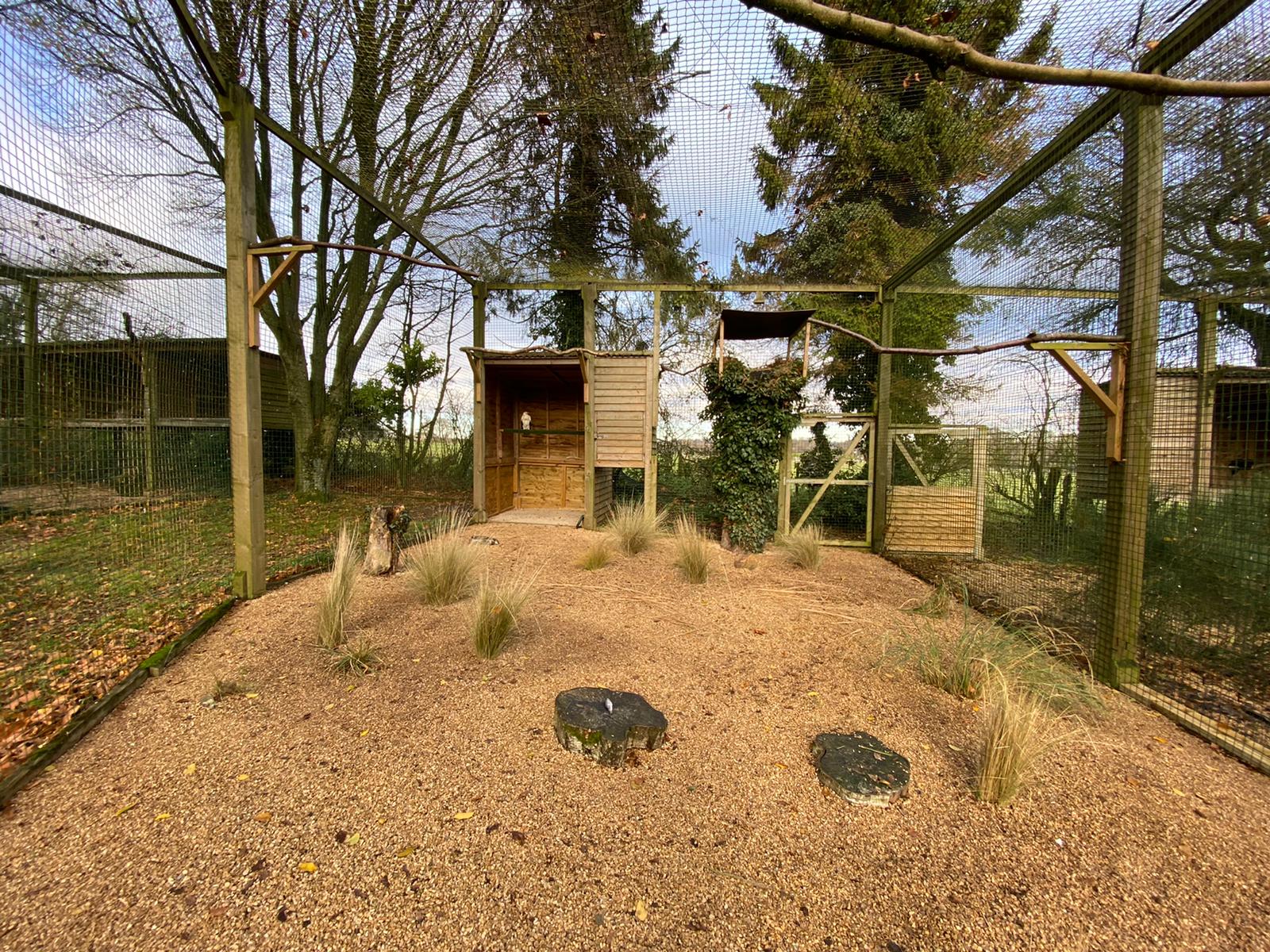
Throughout the year, we are constantly monitoring our birds and their living conditions, and making various renovations and repairs to their accommodation. For our breeding birds, this can be a little trickier as we prefer to leave them undisturbed during the breeding season and so this has to be done visually and from afar. Outside of the breeding season, we take the opportunity to catch them up for a full health check and, at the same time, carry out planned maintenance work on their aviary before returning them. This involves a big team effort to ensure we can make the process as quick and easy as possible for the birds.
Usually, we carry out much of this work in January but with the announcement of another lockdown, we took this as an opportunity to begin this and other projects. During November, the Bird Team and our amazing volunteers have worked tirelessly on a variety of projects, including the annual health checks and aviary work for our breeding Cinereous, White-headed, African White-backed and Palm-nut Vultures. At the start of the month, we made a very ambitious plan and we’re delighted to have not only completed the majority of jobs on the list, but also a few extra, quite a remarkable achievement.
Our first project was in our big vulture aviary where we do the Vulture Restaurant. The first, and most crucial, part of this process is to collect the birds from the aviary for health checking; this involves body condition assessment and checking their weight and, whilst we work on the aviary, we move them temporarily to our hospital aviaries. In this process, we also collect faecal samples to screen for parasites. Once the aviary is empty, that enables the team to make a start on renovations and any refurbishments. We clear the three nest sites and add fresh substrate. This year, however, two of the nest sites were replaced entirely, which was quite a big job. Perching in the aviary was checked and replaced where needed, and then a deep clean of the aviary ensued, and we topped up gravel and sand. We also removed some overgrown trees from around the edges of the aviary. It took us just one week to complete all this work, and the birds were back in: one of the fastest turnarounds we have achieved for that aviary’s annual refurbishment!
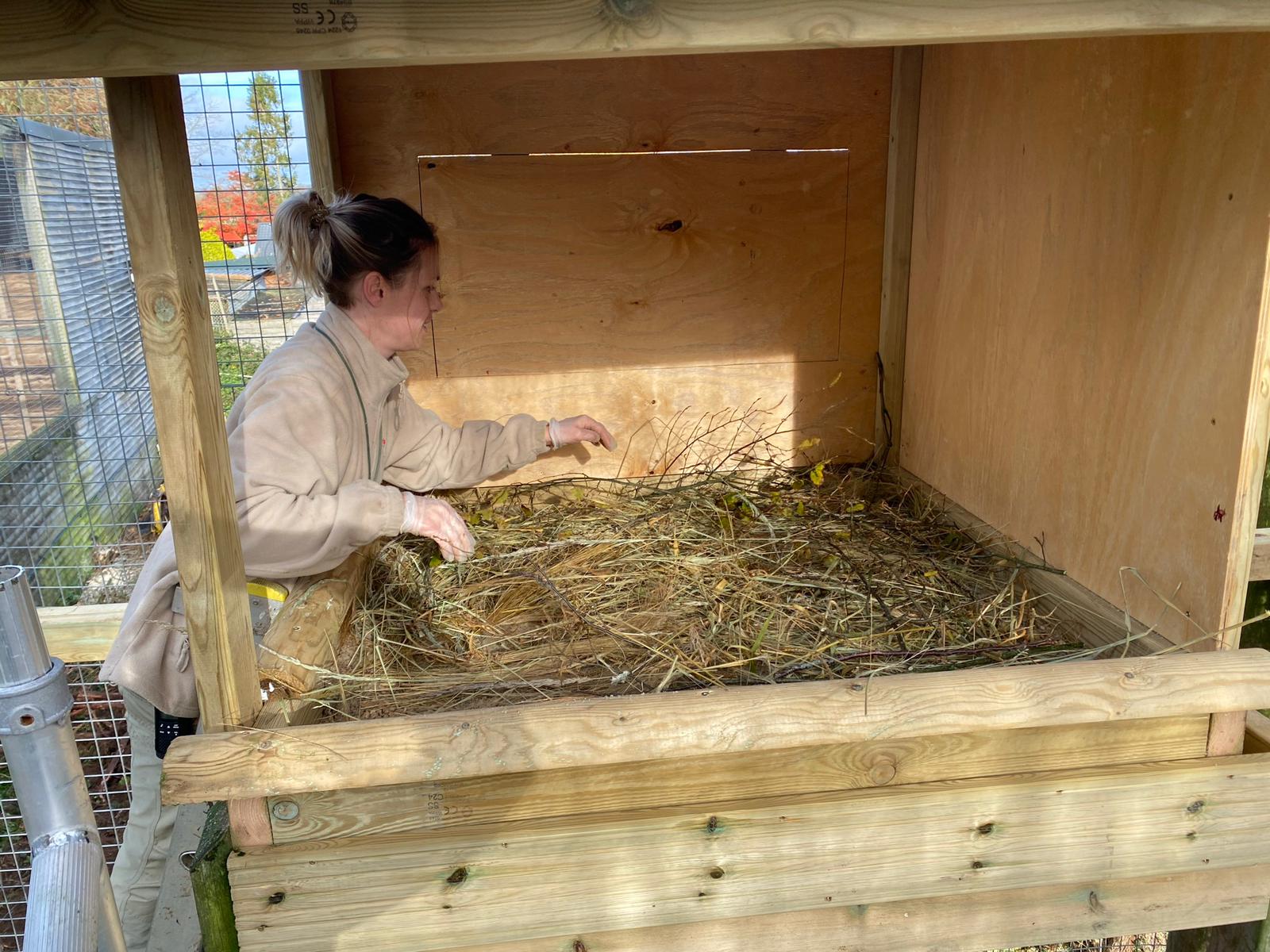
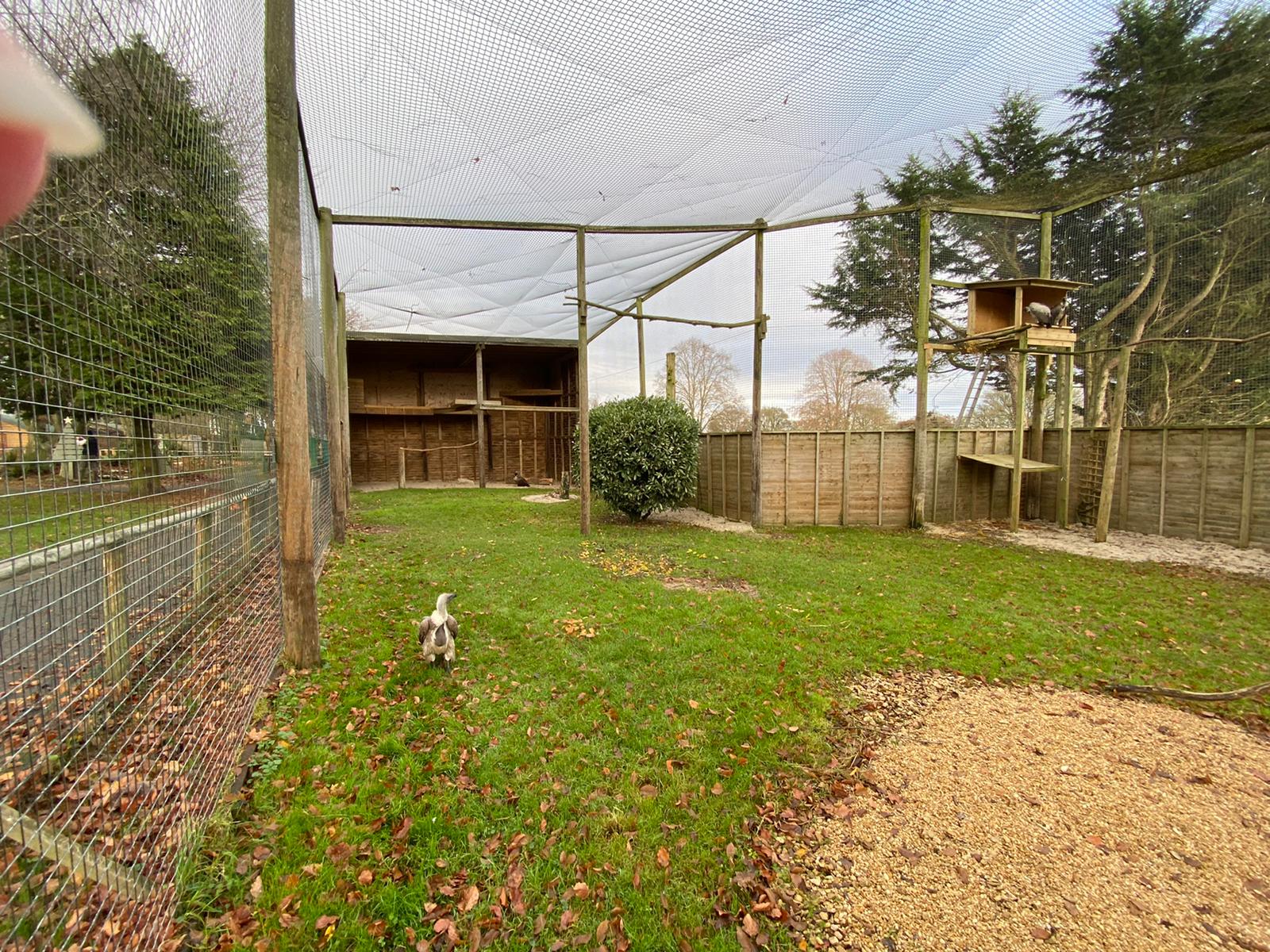
Next in line was Angus and Satara, our White-headed Vultures. Their aviary was going to prove something more of a challenge as there were several structural issues to address. In bad weather last year, we had to put in a temporary fix to one of the main aviary structure poles, which had been damaged in strong winds. Some of you will have seen the support wire, which was on the outside of the aviary, erected over the pathway. It wasn’t ideal but it made it safe and meant that we didn’t disturb the pair during their breeding season. We’ve now fully fixed this and removed the support wire. The next fix was to raise the roof netting which has started to droop. We managed to source a seven-metre tree trunk and next up was the tricky part of negotiating it into the aviary and installing it. It was a sight to see and probably the most challenging job we faced this month but we were delighted to finally get it in place and are looking forward to you visiting to see the fruits of our labour! Other jobs in that aviary were to fix the leaky pond, replacing perching, refurbishing the nest, deep-cleaning the aviary, planting, weeding and trimming back bushes. It kept everybody busy for around a week!
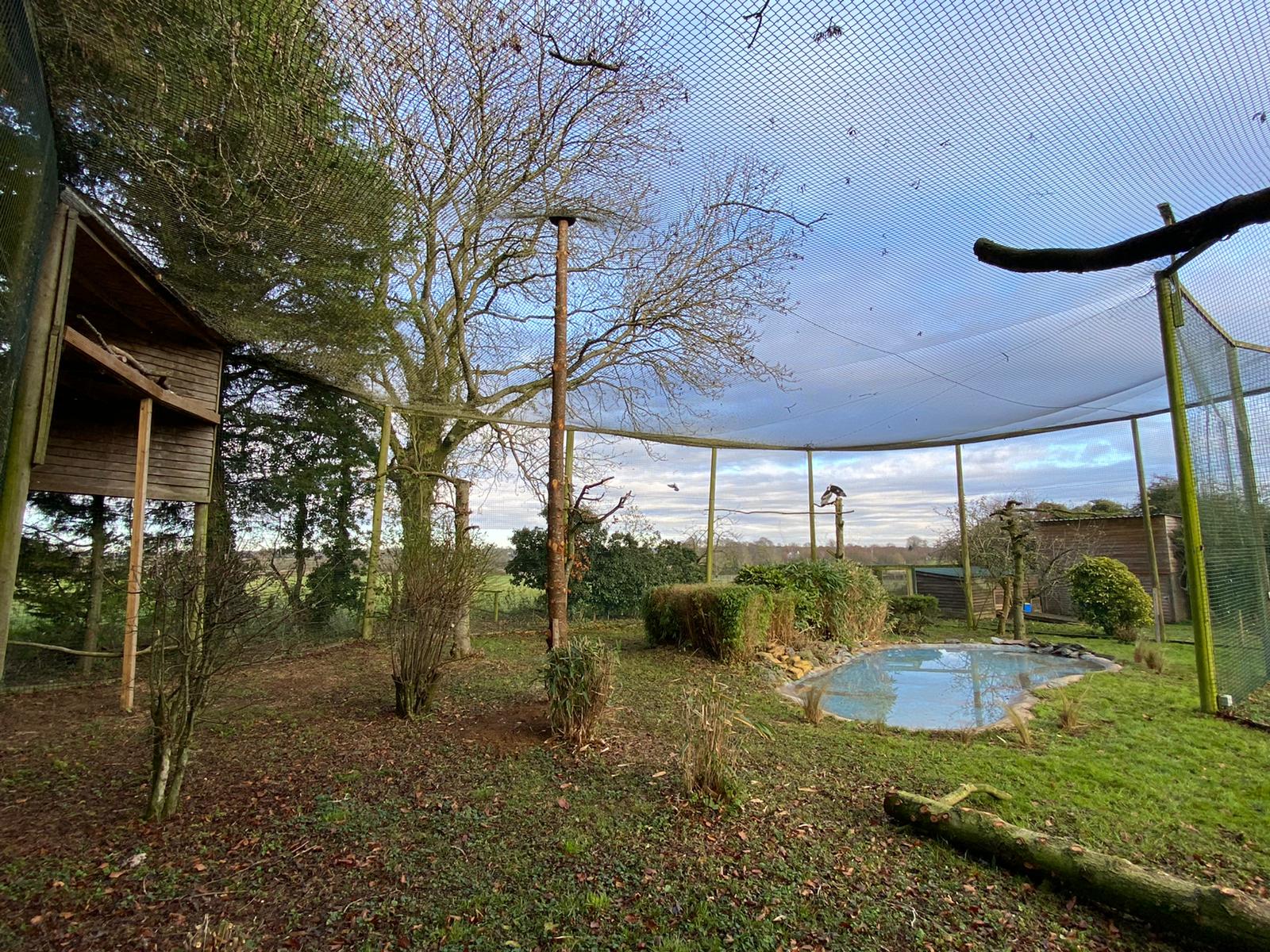
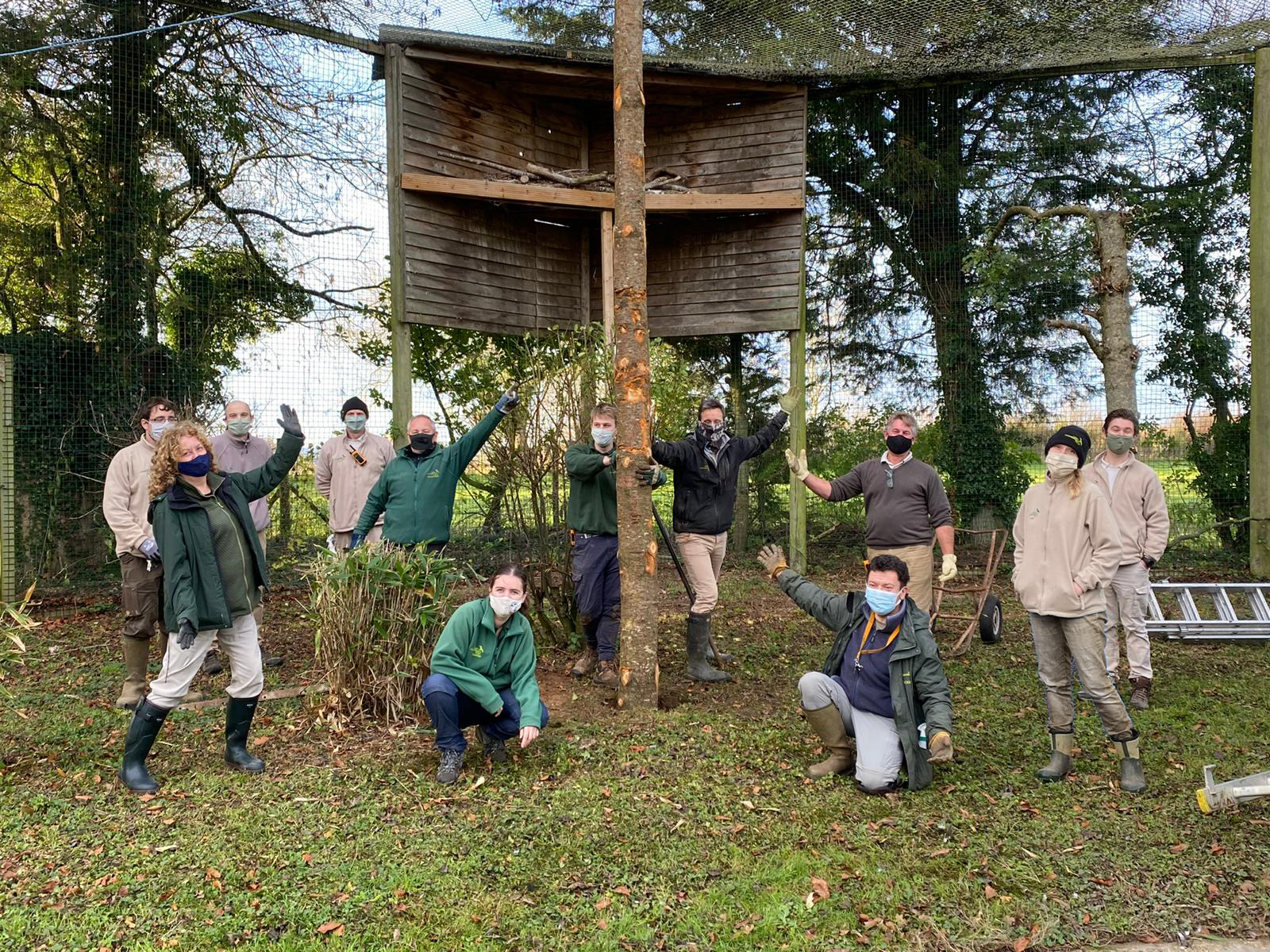
For our breeding pair of Cinereous Vultures, Thor and Aldara, following their health checks, they had their annual holiday to stay with Cassius and Clay, our African White-backed Vultures. This allowed us to get in and work on their aviary ready for the breeding season. Last year, we put a lot of work into making this suitable for them. Aldara cannot fly, so we have a very low nest site with stepping stones and logs so that she can reach it easily. Both vultures appeared quite content at getting in and out, and would sit in the nest site at night, and we had high hopes for them. Thor diligently built a beautiful nest there however Aldara had different ideas and built a poorly constructed nest on the ground right in front of it. Despite this, she did lay an egg in it but it appears the egg was infertile. This year, we are hoping that now she has started to use the nest site as an evening roost more that she may take Thor’s lead and lay in the house. We have made some small adaptations to the nest site, and feeding routines which we hope will make it more attractive to her. Our fingers are crossed that next spring we’ll have exciting news to share with you!
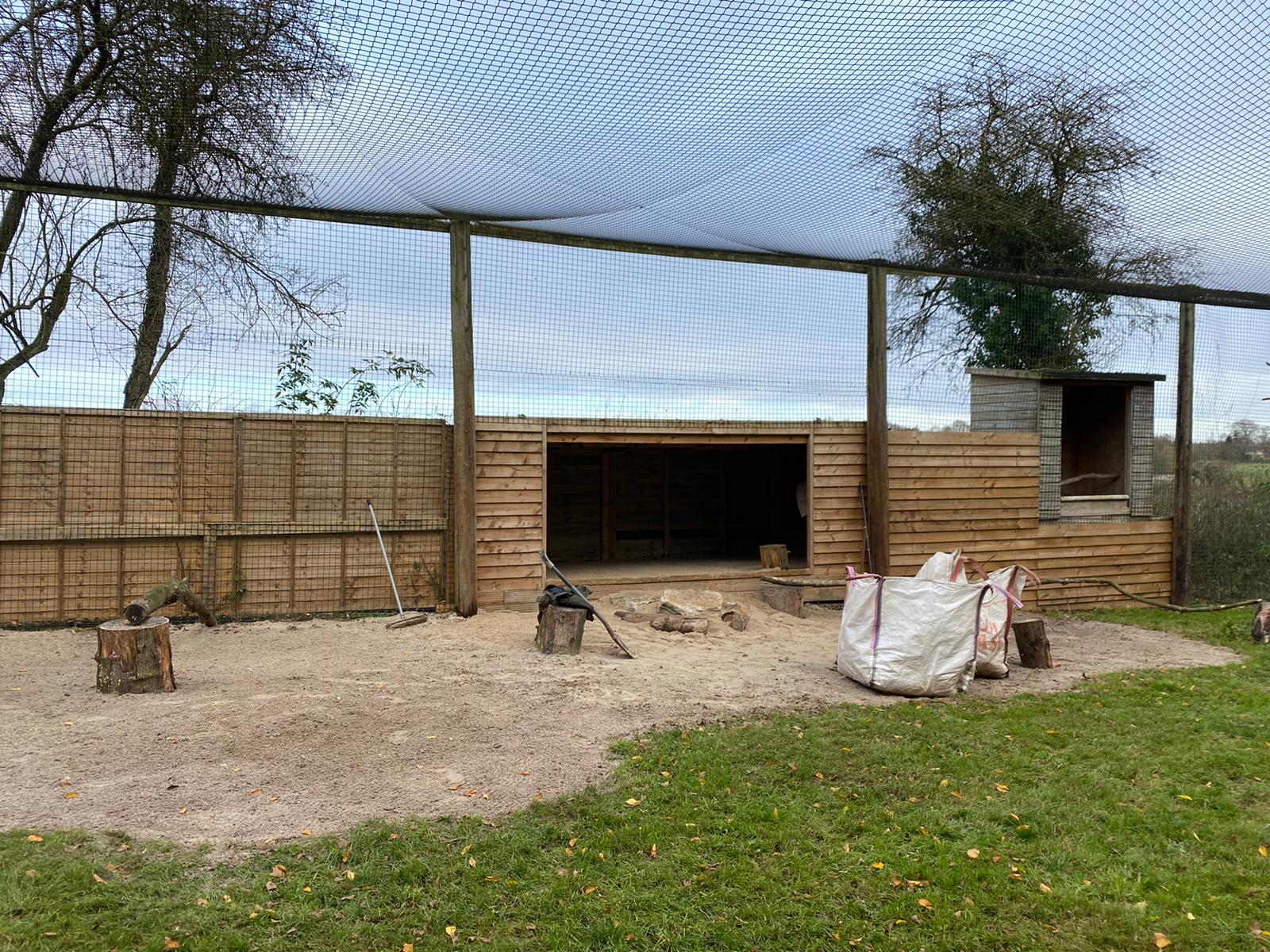
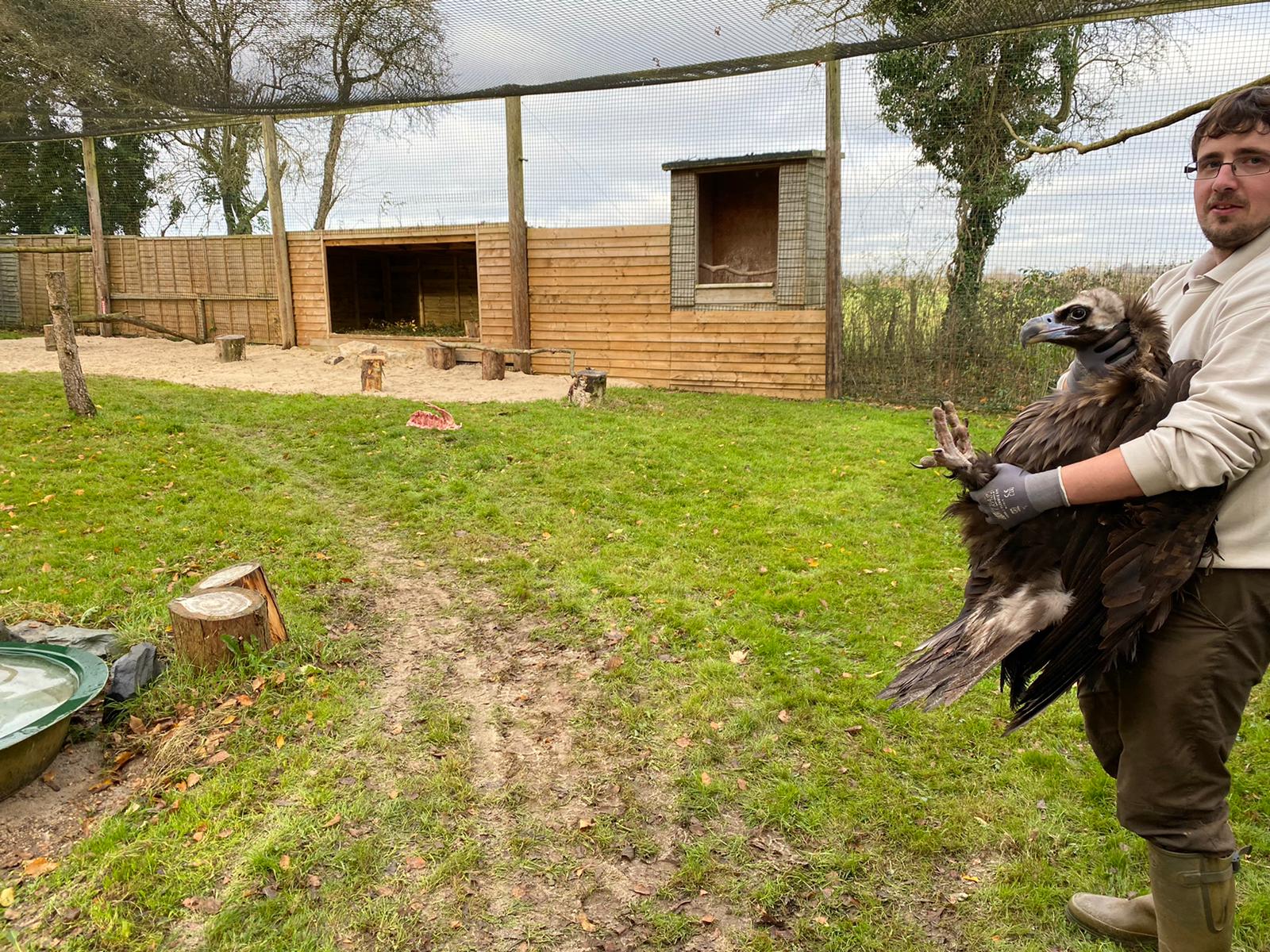
Our Palm-nut Vultures have also had their aviary refurbished though, in comparison to the others, this was very straightforward with some simple improvements to their nest area, we planted some grass and tried to remove some unwanted elder!
It’s been fantastic to make such a good start on all of these projects whilst we weren’t able to open but we’re now really looking forward to you coming back to visit. We can’t wait to have you back and for you to see what we’ve been up to!
